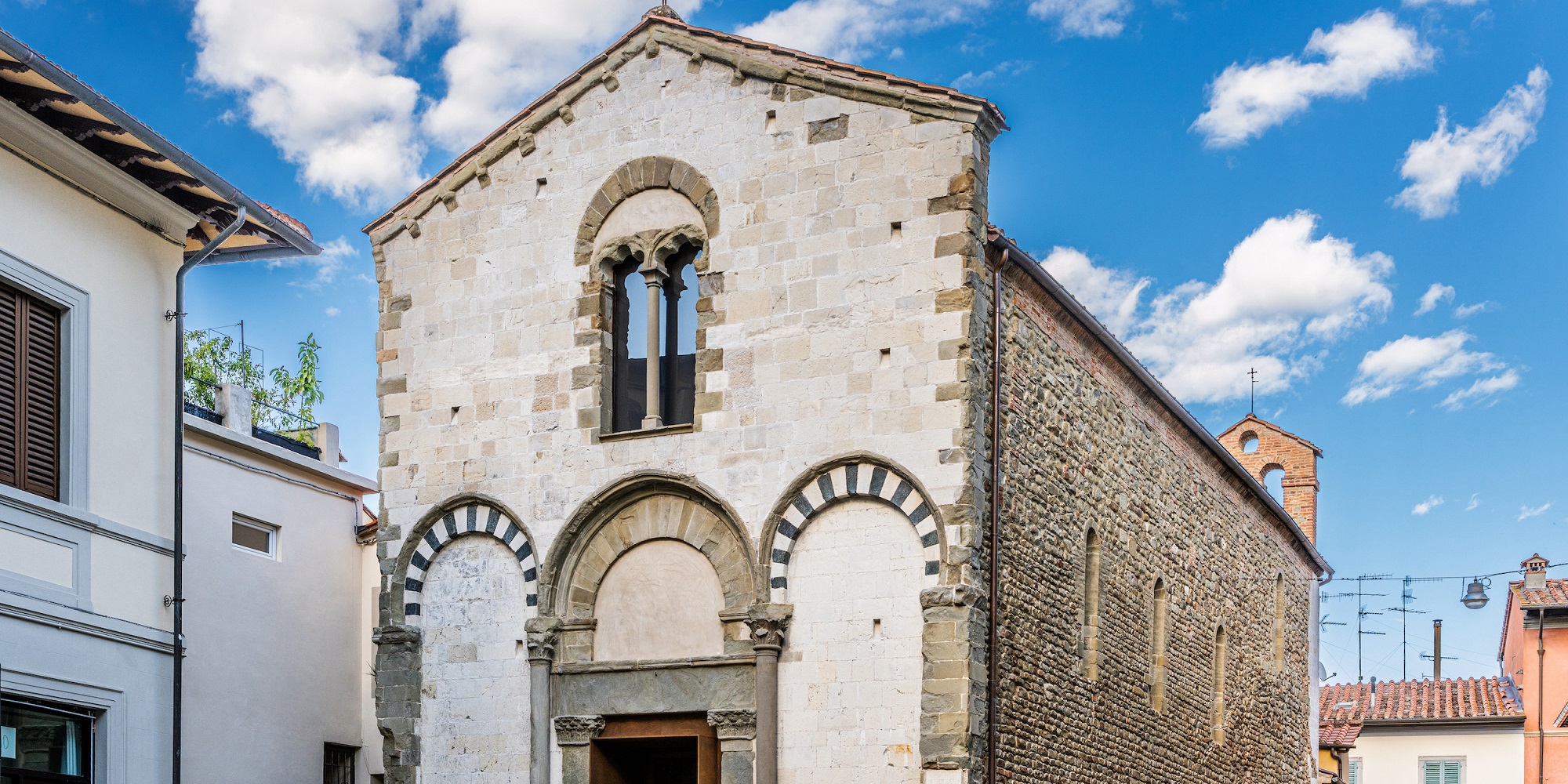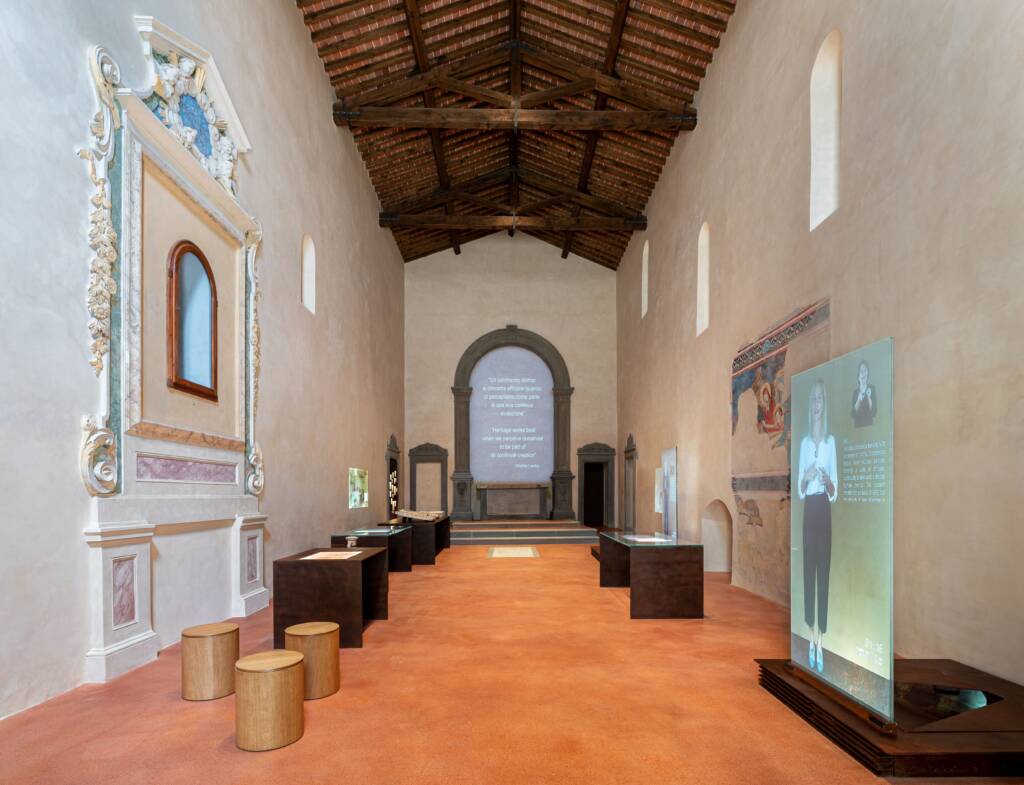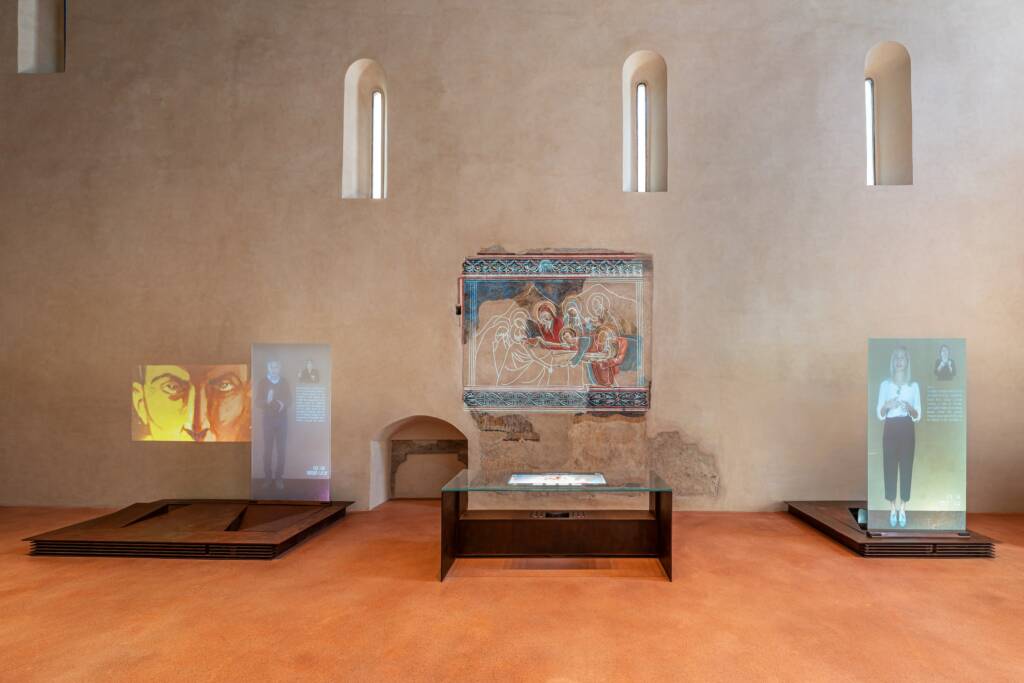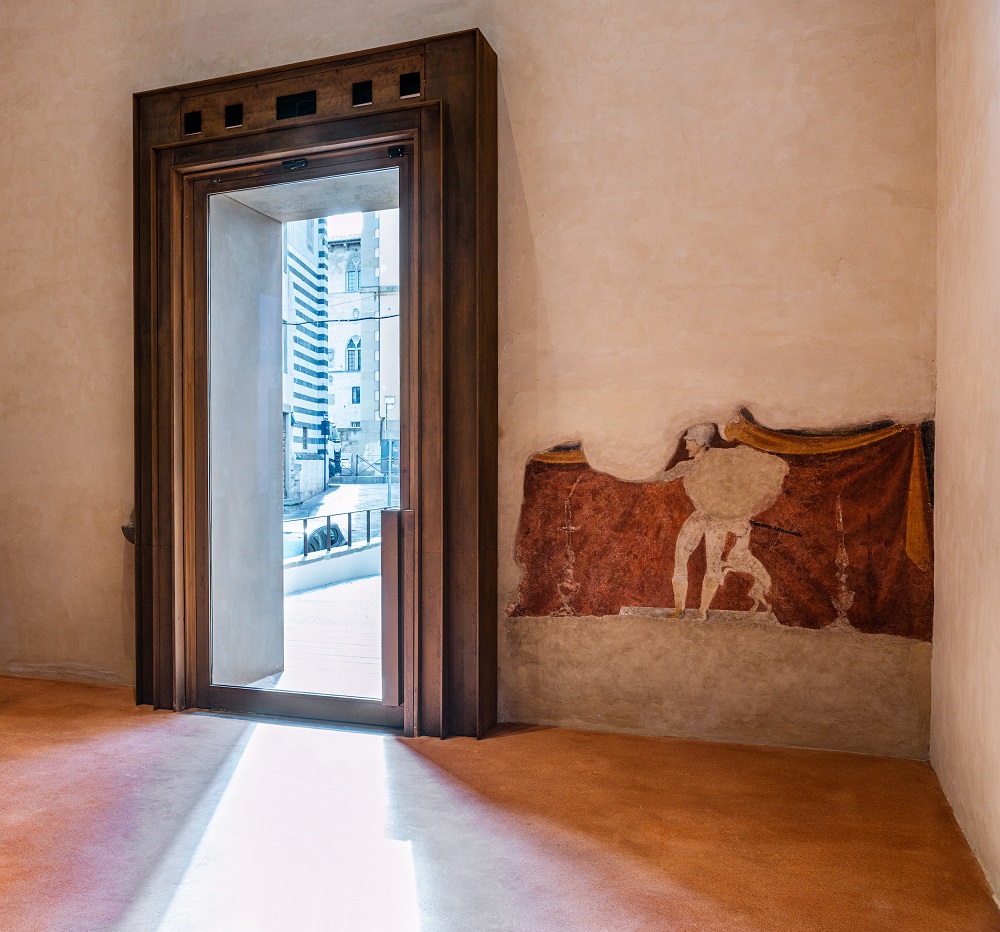San Salvatore

According to a tradition cited by various authors, San Salvatore was the first church to be built in Pistoia. Documented from the 10th century, it was built close to the early medieval walls of the city. After it became a parish church, it was used for worship until the end of the 18th century, when Bishop Scipione de’ Ricci suppressed it, causing the building’s lengthy decline, which was only halted by complex restoration work promoted by the Fondazione Caript in 2015.


Meticulous restoration work and excavations brought to light traces of the oldest phases of the church, revealing Roman and early medieval remains. Part of the foundation pit of the first circle of walls dating back to the Longobard period (8th century AD) was found, and new light shed on the origins of the legend that Catiline, a Roman conspirator defeated on the Apennines, was buried at the foot of the tabernacle in the street.
The most outstanding discovery is undoubtedly that of an incomplete fresco, Lamentation over the Dead Christ, dating to the end of the 13th century and attributed to the circle of Lippo di Benivieni, an important Florence-trained painter active between 1296 and 1316.
The building, which has been completely restored, was given back to the city in 2022 as a cultural and museum space.




